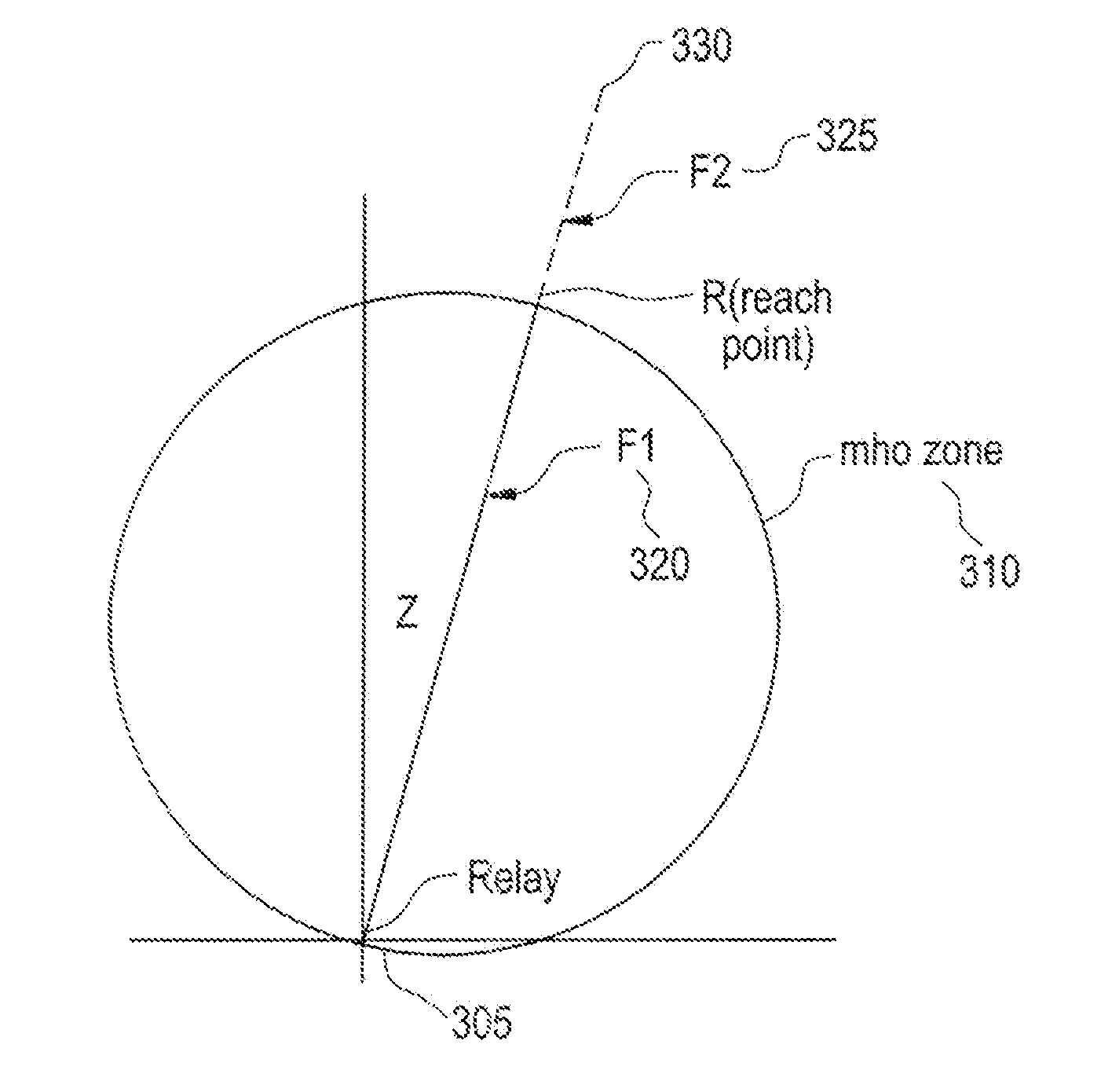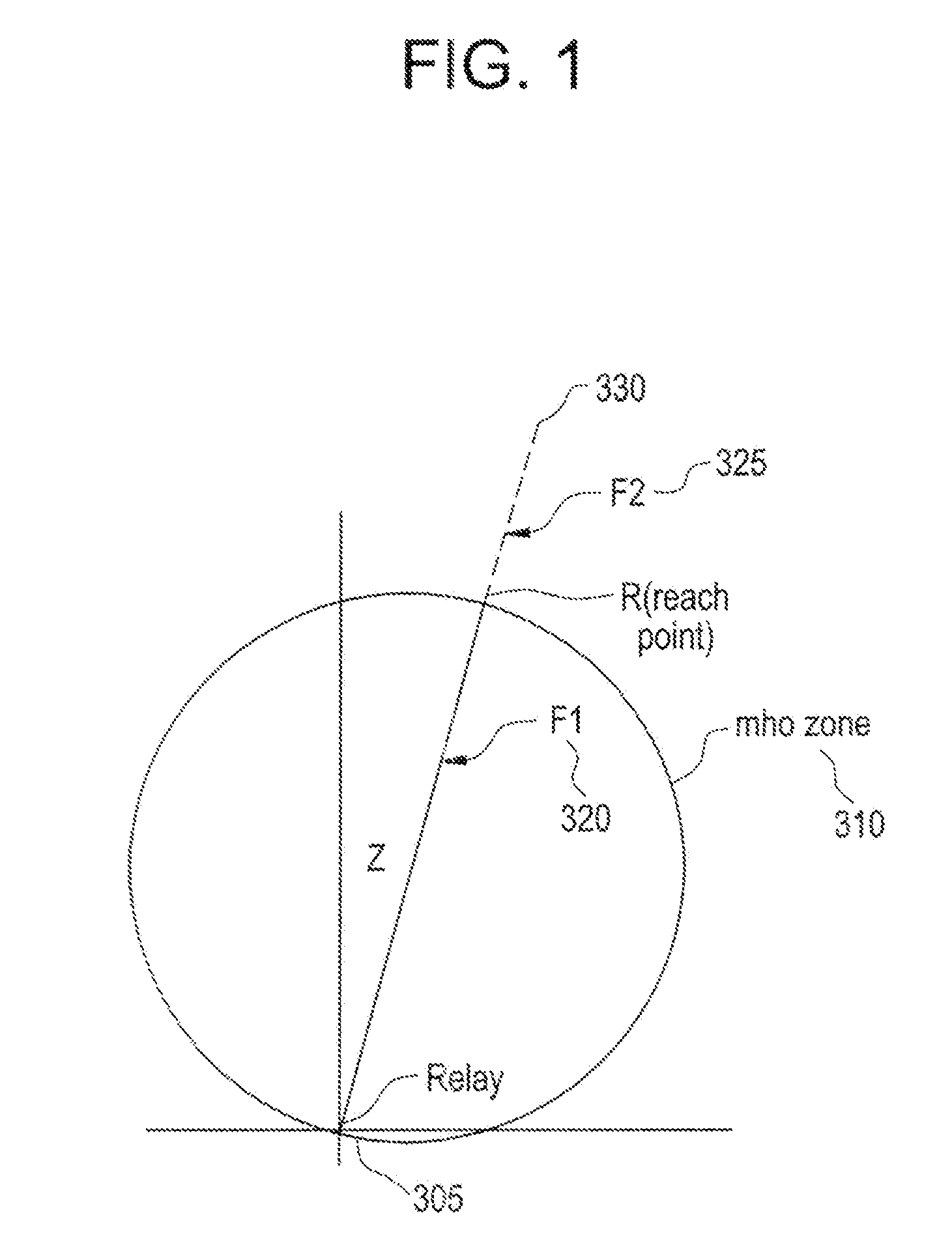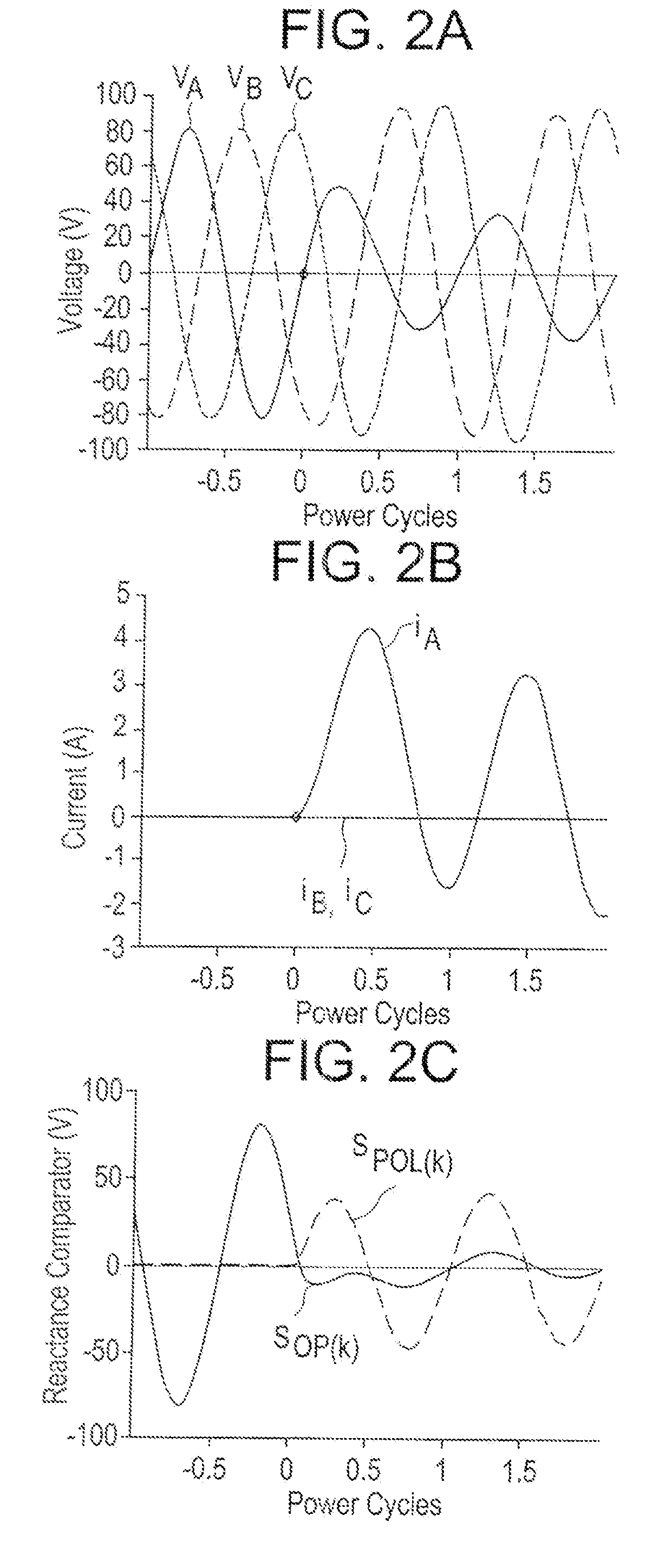Fast impedance protection technique immune to dynamic errors of capacitive voltage transformers
a capacitive voltage transformer and impedance protection technology, applied in the direction of electrical equipment, arrangements resposes to fault current, impedence measurement, etc., can solve the problem of changing system voltage and/or current, and affecting the stability of the entire power system. , to achieve the effect of a shorter window and a faster operating tim
- Summary
- Abstract
- Description
- Claims
- Application Information
AI Technical Summary
Problems solved by technology
Method used
Image
Examples
Embodiment Construction
[0027]One or more exemplary embodiments of the invention are described below in detail. The disclosed embodiments are intended to be illustrative only since numerous modifications and variations therein will be apparent to those of ordinary skill in the art.
[0028]Aspects of the present invention generally relate to an impedance algorithm that can identity faults within its zone by processing samples of the waveforms in the time domain—without the need of a DFT. The time required for detection is less than one power cycle for faults throughout much of the zone of protection. Aspects of the invention form the traditional impedance characteristics of a distance relay such as mho, reactance, blinders, phase selection and other as per the art of impedance protection but in the time domain rather than the frequency domain.
[0029]The traditional frequency domain approach to impedance protection extracts phasors of currents and voltages, and applies the impedance characteristics to the phaso...
PUM
 Login to View More
Login to View More Abstract
Description
Claims
Application Information
 Login to View More
Login to View More - R&D
- Intellectual Property
- Life Sciences
- Materials
- Tech Scout
- Unparalleled Data Quality
- Higher Quality Content
- 60% Fewer Hallucinations
Browse by: Latest US Patents, China's latest patents, Technical Efficacy Thesaurus, Application Domain, Technology Topic, Popular Technical Reports.
© 2025 PatSnap. All rights reserved.Legal|Privacy policy|Modern Slavery Act Transparency Statement|Sitemap|About US| Contact US: help@patsnap.com



